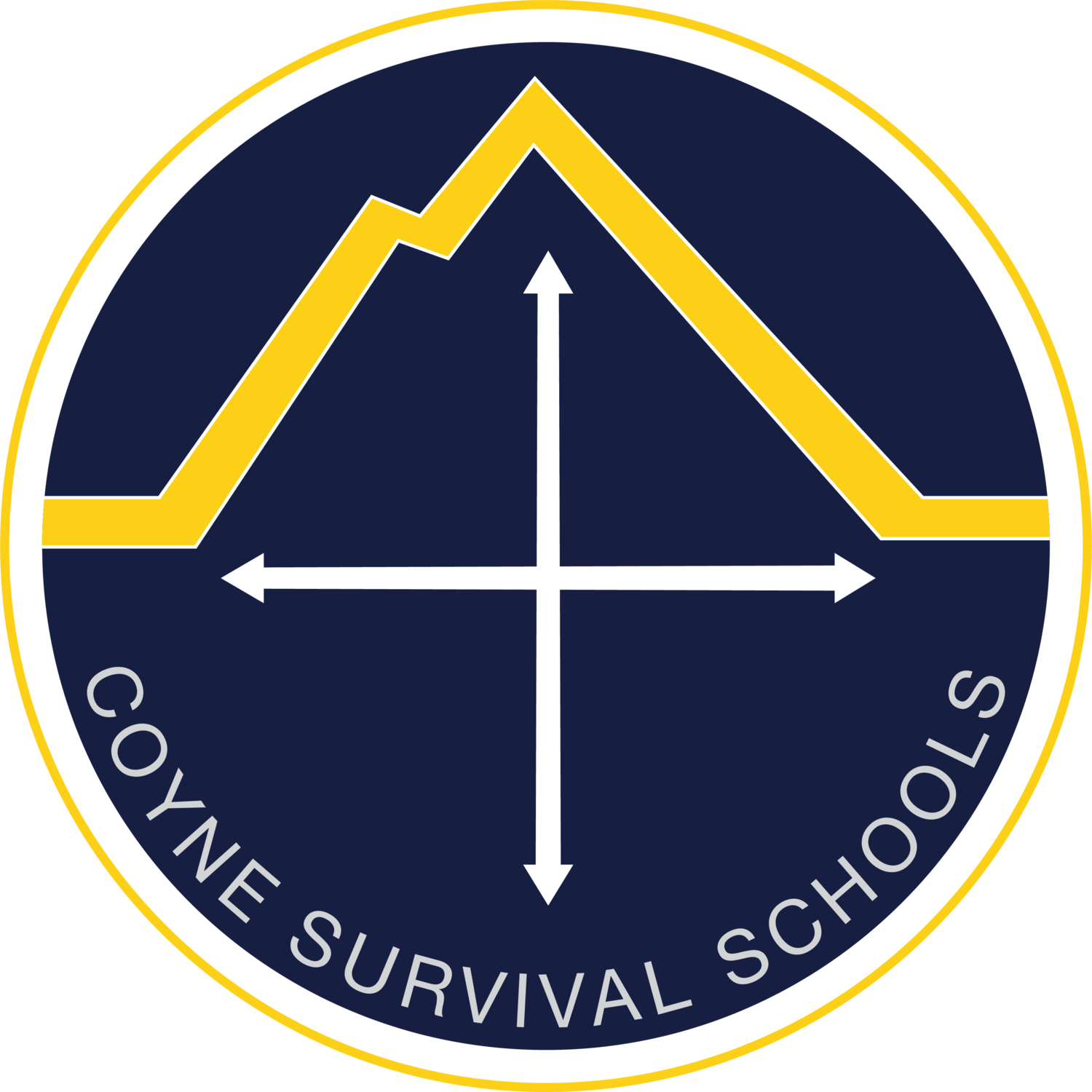The following recounts an actual event that took place on one of our 2010 wilderness survival field courses. It highlights the importance of preparedness in the forms of: gear, exercise, and training/experience.
I was leading the hike out of our field course training area when I heard a scramble in the bushes. We were now nearing the freeway that runs through the Tehachapi-Mojave Desert Pass, and the dry wash we were hiking in was getting close to the Pacific Crest Trail (the world famous 2,000 mile+ hiking trail that travels from Canada to Mexico). During the summer it’s not uncommon for us to encounter a “PCT” hiker at the beginning of our wash. This encounter was to be a little different. It turns out the scramble in the bushes above the wash was a frightened hippie running for his- well actually his girlfriend’s- life.
“Help me, my girlfriend’s dying” were the first words he uttered as he appeared above us on the rim of the dry wash, with what I might add was a TOTAL deer in headlights look… perhaps his first outdoor emergency. told the students to stay put, and we proceeded with a sense of urgency.
I say hippie (no offense) because the face I saw with the deer in headlights look was surrounded by a head full of lengthy dreadlocks. He was slim and was a good hiker. I could tell because he started leading us straight up the side of the steep mountain our dry wash bordered, quite briskly, and it didn't faze him a bit. It was 90+ degrees outside, and it became obvious what had transpired before he began explaining. “We were hiking and ran out of water… we decided to cut the trail…she started not feeling good…”. His girlfriend came into view sitting in the partial shade of the small California Junipers growing on the hillside. She was having a bit of heat exhaustion but she was in the early stages and completely manageable. I say that because she was “all there”… she didn't have the “where am I” look on her face that accompanies dangerous heat emergencies, only the “holy sh** I’m hot” look on her face.
Though flushed, it was a pale face on a pale body, not medically speaking; it was just obvious she wasn't going outside much. I asked her if it was her first hike this year- mid July- it was. This reinforced my general impression that she hadn't experienced severe fluid loss, she wasn't acclimated. She had built up too much heat too rapidly, and didn't stop and cool down when she should have. She pushed it because she was out of water, was scared, and could see the freeway. I asked her the standard questions about her status and what led up to the incident after taking her vitals, giving her the last of my water, and telling her to “sip slow, don’t pour any on you”. I rigged up a tarp (e-blanket) for shade above her and gave her the three cold packs I always carry in my med-kit on summer field courses- one on the neck, two under the armpits. This is because these locations are where the arteries closest to your core come nearest the surface, allowing for cooling of blood that cools the organs. Blood does more than transport nutrients you see- it transports heat and regulates body temperature.
Heat injuries can escalate very rapidly, but if you intervene early, they can de-escalate rapidly as well. After about ten minutes of cooling, and only a few mouthfuls of water, she was ready to be escorted to the freeway where their ride was waiting. They hiked out with our group and we sent them on their way at the trailhead. This story illustrates the importance not only of emergency gear preparedness, but of physical preparedness as well. In a wilderness emergency, it may come down simply to giving it all you've got, and if all you’ve got is a stomach full of cheeseburgers and a set of lungs that haven’t seen a mile run since jr high…you greatly reduce your chances. When it comes to physical stressors, you are counting on your body’s ability to adapt and cope: to clot blood, pump endorphins for pain, regulate temperature, etc. When you work out regularly you constantly challenge your body to adapt: to increase blood, nutrient, and oxygen flow and to process all of those more efficiently, to hydrate, to work hard in anaerobic conditions, to pump endorphins that dull pain, etc. Bottom line; you've got yourself a fine blade- now give yourself an edge. If you want to be prepared for an emergency, then workout; fireman don’t just buy good hoses and hope for the best right!
That being said, good gear is very important. Here’s a few of my guidelines for selecting it:
*Be sure it’s proven in the field. Don’t buy the newest/coolest emergency gear. It’s not a fashion show- you need reliability. “Like your life depends on it” applies.
*Avoid gear with celebrity endorsements; ESPECIALLY “SURVIVAL" CELEBRITIES . These guys will sell anything they’re paid to. Instead look for endorsements from outdoor/rescue organizations. They aren't as willing to put lives at risk for a few bucks.
*Train with your gear; you don't want the first time you use it to be in a wilderness emergency.
*It’s ok to search for cheap prices, but you don’t want cheap emergency gear.
*Customize your kits for the activity, the climate, and your pertinent personal needs.
*Remember; it has to be easy to use in an emergency. This means that optimally it should not break easily and should require as little skill as possible to operate. Quick, simple, effective.
*Remember again; it’s for use in an emergency. Are you really gonna need that fishing gear?
